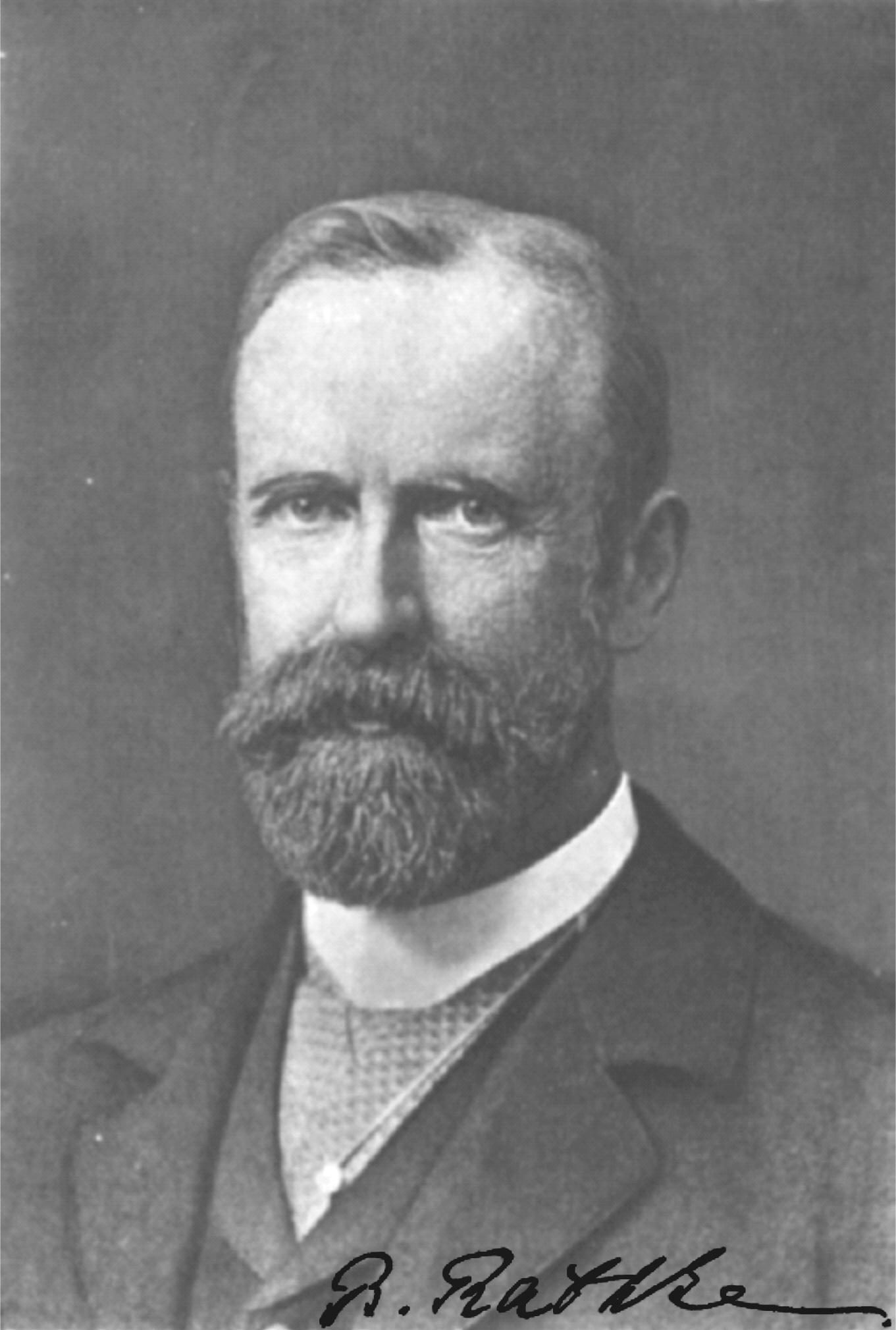Bernhard Rathke on:
[Wikipedia]
[Google]
[Amazon]
 Heinrich Bernhard Rathke (20 January 1840 in
Heinrich Bernhard Rathke (20 January 1840 in
Catalogus Professorum Halensis during this time he published what became known as the Rathke synthesis for making
Heinrich Bernhard Rathke
Online books
 Heinrich Bernhard Rathke (20 January 1840 in
Heinrich Bernhard Rathke (20 January 1840 in Königsberg
Königsberg (; ; ; ; ; ; , ) is the historic Germany, German and Prussian name of the city now called Kaliningrad, Russia. The city was founded in 1255 on the site of the small Old Prussians, Old Prussian settlement ''Twangste'' by the Teuton ...
– 14 August 1923 in Bad Reichenhall
Bad Reichenhall (; Central Bavarian: ''Reichahoi'') is a spa town, and administrative center of the Berchtesgadener Land district in Upper Bavaria, Germany. It is located near Salzburg in a basin encircled by the Chiemgau Alps (including Mount Stau ...
) was a German chemist
A chemist (from Greek ''chēm(ía)'' alchemy; replacing ''chymist'' from Medieval Latin ''alchemist'') is a graduated scientist trained in the study of chemistry, or an officially enrolled student in the field. Chemists study the composition of ...
. He was the son of embryologist
Embryology (from Greek ἔμβρυον, ''embryon'', "the unborn, embryo"; and -λογία, ''-logia'') is the branch of animal biology that studies the prenatal development of gametes (sex cells), fertilization, and development of embryos and ...
Martin Rathke
Martin Heinrich Rathke (25 August 1793, Danzig – 3 September 1860, Königsberg) was a German embryologist and anatomist. Along with Karl Ernst von Baer and Christian Heinrich Pander, he is recognized as one of the founders of modern embryology ...
.
He studied natural sciences at the University of Königsberg
The University of Königsberg () was the university of Königsberg in Duchy of Prussia, which was a fief of Poland. It was founded in 1544 as the world's second Protestant Reformation, Protestant academy (after the University of Marburg) by Duke A ...
, and afterwards worked in Robert Bunsen
Robert Wilhelm Eberhard Bunsen (;
30 March 1811
– 16 August 1899) was a German chemist. He investigated emission spectra of heated elements, and discovered caesium (in 1860) and rubidium (in 1861) with the physicist Gustav Kirchhoff. The Bu ...
's laboratory at Heidelberg
Heidelberg (; ; ) is the List of cities in Baden-Württemberg by population, fifth-largest city in the States of Germany, German state of Baden-Württemberg, and with a population of about 163,000, of which roughly a quarter consists of studen ...
. In 1867 he started work as an assistant at the chemical institute of the University of Halle
Martin Luther University Halle-Wittenberg (), also referred to as MLU, is a public research university in the cities of Halle and Wittenberg. It is the largest and oldest university in the German state of Saxony-Anhalt. MLU offers German and i ...
, and two years later obtained his habilitation with a thesis on the history of selenium
Selenium is a chemical element; it has symbol (chemistry), symbol Se and atomic number 34. It has various physical appearances, including a brick-red powder, a vitreous black solid, and a grey metallic-looking form. It seldom occurs in this elem ...
. From 1873 to 1876 he taught classes in chemistry and chemical engineering
Chemical engineering is an engineering field which deals with the study of the operation and design of chemical plants as well as methods of improving production. Chemical engineers develop economical commercial processes to convert raw materials ...
at the higher vocational school in Kassel
Kassel (; in Germany, spelled Cassel until 1926) is a city on the Fulda River in North Hesse, northern Hesse, in Central Germany (geography), central Germany. It is the administrative seat of the Regierungsbezirk Kassel (region), Kassel and the d ...
. In 1876 he became an associate professor at Halle,Bernhard RathkeCatalogus Professorum Halensis during this time he published what became known as the Rathke synthesis for making
guanidinium
Guanidine is the compound with the formula HNC(NH2)2. It is a colourless solid that dissolves in polar solvents. It is a strong base that is used in the production of plastics and explosives. It is found in urine predominantly in patients experie ...
groups. From 1882 to 1900, was an honorary full professor at the University of Marburg
The Philipps University of Marburg () is a public research university located in Marburg, Germany. It was founded in 1527 by Philip I, Landgrave of Hesse, which makes it one of Germany's oldest universities and the oldest still operating Prote ...
. In 1885 he became a member of the Academy of Sciences Leopoldina
The German National Academy of Sciences Leopoldina (), in short Leopoldina, is the national academy of Germany, and is located in Halle (Saale). Founded on 1 January 1652, based on academic models in Italy, it was originally named the ''Academi ...
.
Published works
* ''De duobus acidis selenium et sulfur una continentibus''; dissertation thesis (1865). * ''Beiträge zur Geschichte des Selens'' (1869) – Contributions to the history of selenium. * ''Ueber die principien der thermochemie und ihre anwendung. (Mit besonderer berücksichtigung von Berthelot's "Essai de mécanique chimique")'' (1881) – On the principles ofthermochemistry
Thermochemistry is the study of the heat energy which is associated with chemical reactions and/or phase changes such as melting and boiling. A reaction may release or absorb energy, and a phase change may do the same. Thermochemistry focuses on ...
and its applications (With special recognition of Marcellin Berthelot
Pierre Eugène Marcellin Berthelot (; 25 October 1827 – 18 March 1907) was a French chemist and Republican politician noted for the ThomsenBerthelot principle of thermochemistry. He synthesized many organic compounds from inorganic substance ...
's ''Essai de mécanique chimique'').Online books
References
{{DEFAULTSORT:Rathke, Bernhard 1840 births 1923 deaths Scientists from the Kingdom of Prussia Scientists from Königsberg University of Königsberg alumni Academic staff of the University of Halle Academic staff of the University of Marburg 19th-century German chemists 20th-century German chemists